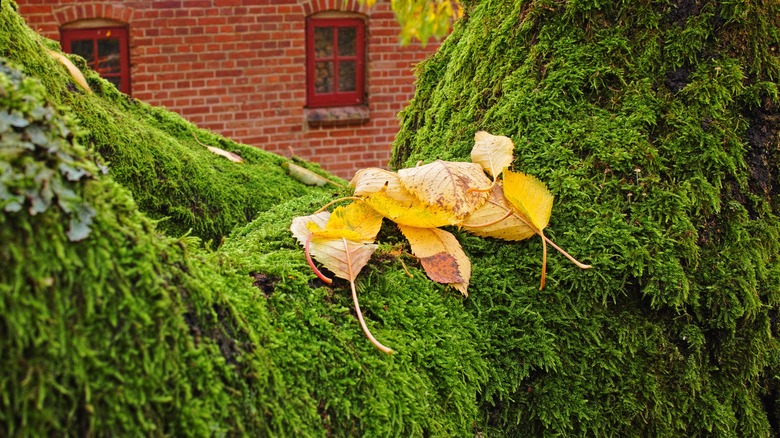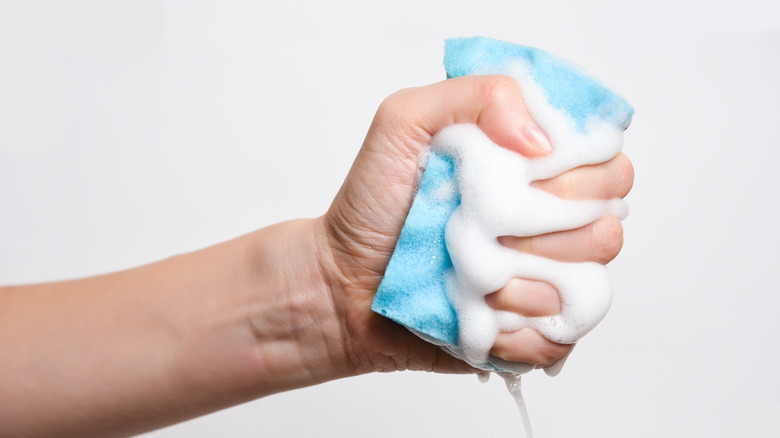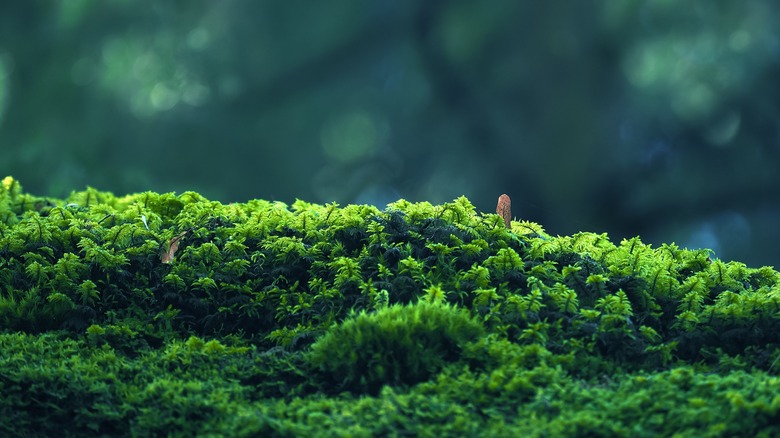How To Use Dish Soap To Get Rid Of Unwanted Moss
Getting rid of weeds is a crucial but never-ending task. No matter how long you spend pulling dandelions one week, there are inevitably a few new buds starting to pop up within a few days — and usually, it doesn't take long before some other pesky plant makes its way onto your property.
Unfortunately, if you find moss on your property, you may be in for a few headaches. While the weed may look pretty, it causes whatever it grows on to deteriorate and makes it harder to spot fungus, according to Rot Ban Ultra Cleaning — potentially leading to pricey renovations. Plus, moss is notoriously resistant to traditional weed killers, making it difficult to get rid of — unless you know specifically how to treat it. Luckily, if you're struggling to get rid of moss, you don't need to purchase any fancy detergents or weed repellants. The key to a moss-free property is already in your kitchen.
Using dish soap to remove moss
Considering how expensive weed killers can be, we generally prefer to make our own. Fortunately, Joe's Lawn Care has a great recipe that stops moss right in its tracks: combine 60 mL of dish soap and 4.5 L of water in a large spray bottle. If you only have a smaller spray bottle on hand, you can either store some of the soapy water in a jar (depending on the size of your moss problem, you may use most of it in one go) or combine just under 15 mL of soap with 1L of water to create a smaller batch.
Either way, once you've made your soapy mixture, go ahead and spray any unwanted moss outside. Don't be shy, either — there's a reason that you've made so much. The more soap that the moss tries to absorb, the more likely it is to die. For best results, we also recommend physically removing the moss afterward.
Watch out for zombie moss
Here's where things get weird. According to Garden Guides, soap can dehydrate a plant, which in turn leads to the plant dying. The logic seems simple enough to follow — spray the moss with a soapy mixture, and you'll kill it. That should eliminate the problem, right?
Well, not exactly.
If you happen to spot dried out, basically dead moss, you'd be forgiven for thinking that it's a goner — and that you'll never have to worry about it taking over half of your lawn. Unfortunately, though, you'd also be very sadly mistaken. According to Moss Lovers, dehydrated moss can (and will) essentially spring back to life as soon as it comes into contact with moisture. In other words, 'killing' the moss is only half the battle. Ideally, you'll also want to remove the dried-out patches from your property before they can rehydrate, reversing all of your hard work.
If you find that moss keeps coming back over and over again, you may have an issue with your soil's pH. According to Oregon State University, increasing the pH may help prevent moss growth. That being said, you should always check your soil's pH before tampering with it to avoid accidentally harming the rest of your plants.


